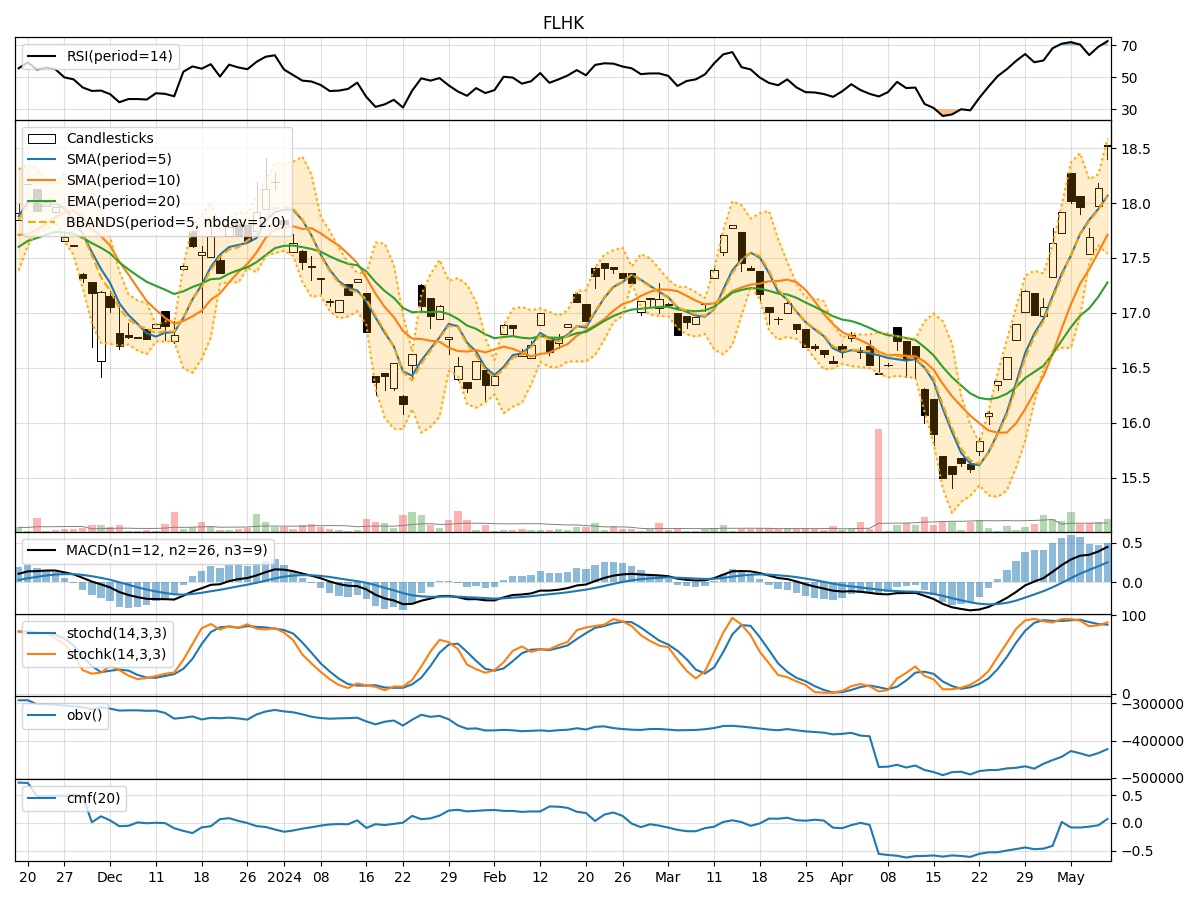
Technical Analysis of FLHK 2024-05-10
Overview:
In analyzing the technical indicators for FLHK over the last 5 days, we will delve into the trend, momentum, volatility, and volume indicators to provide a comprehensive outlook on the possible stock price movement in the coming days.
Trend Analysis:
- Moving Averages (MA): The 5-day Moving Average (MA) has been consistently above the Simple Moving Average (SMA) and Exponential Moving Average (EMA), indicating a bullish trend.
- MACD: The MACD line has been consistently above the signal line, with both lines showing an upward trend, suggesting bullish momentum.
Momentum Analysis:
- RSI: The Relative Strength Index (RSI) has been fluctuating in the overbought region, indicating strong buying pressure.
- Stochastic Oscillator: Both %K and %D have been in the overbought zone, suggesting a potential reversal or consolidation.
Volatility Analysis:
- Bollinger Bands (BB): The stock price has been trading within the upper Bollinger Band, indicating an uptrend with increased volatility.
Volume Analysis:
- On-Balance Volume (OBV): The OBV has been showing a slight decrease, suggesting some distribution of shares.
- Chaikin Money Flow (CMF): The CMF has been negative, indicating selling pressure in the market.
Key Observations:
- The trend indicators suggest a strong bullish sentiment in the stock.
- Momentum indicators show overbought conditions, signaling a potential reversal or consolidation.
- Volatility has increased, indicating potential price swings.
- Volume indicators reflect some distribution of shares and selling pressure.
Conclusion:
Based on the analysis of the technical indicators, the stock is likely to experience a short-term consolidation or a minor pullback due to the overbought conditions in the momentum indicators and the negative CMF. However, the overall trend remains bullish, supported by the moving averages and MACD. Traders may consider taking profits or waiting for a better entry point during the consolidation phase. Long-term investors can hold their positions as the overall trend is still intact.